Congratulations! You have found an innovative software solution and are on the brink of launching your SaaS business – that is commendable.
Whether it is a new product that you are introducing or looking to revamp existing SaaS software, a sound SaaS business plan is your essential guide to climbing the ladder of success.
We understand that crafting a business plan for your SaaS business can seem challenging. That’s why we’re here with our SaaS business plan template, to simplify the planning process and assist you in creating a roadmap for your SaaS.
Key Takeaways
- A SaaS business plan helps you define your marketing strategy, customer acquisition strategy, retention strategy, and strategies to achieve your business goals.
- Craft an impactful executive summary that outlines the type of your SaaS business, marketing approach, financial outlook, and team expertise to attract potential investors and partners.
- Conduct thorough market research to understand market trends, consumer preferences, and the needs of your target market.
- To ensure efficient daily operations, provide in-depth operational plans that incorporate staffing, additional services, and customer service.
- Create realistic financial projections for sales revenue, expenses, and profit forecasts while considering contingencies & emergencies.
Why do you need a SaaS business plan?
For entrepreneurs who jump into business directly without writing a business plan is like delaying their success. Here are some reasons why you need a SaaS business plan:
Strategy
Writing a business plan helps you work out and make clear your business strategy. Do you want customers to pay upfront? Or maybe you’re thinking about the “freemium” idea where some stuff is free, but others need a paid upgrade. Writing this down from the start helps your team understand where you’re headed.
Finances are important
Sometimes, it takes months or even a year to cover customer acquisition costs. So, you need a plan with a solid financial forecast. A good plan lets you play with different situations, so you know how much money you need for both the long and short term.
Acquiring customers
A good business plan outlines how you’ll get new customers. It could be a detailed marketing plan included in your business plan or strategies for how to acquire customers.
Retaining Customers
Getting customers is just part of the game for a subscription business. SaaS businesses need to keep their customers coming back, especially in a competitive market.
Knowing Your Market
A business plan lets you identify your ideal customer profile. Knowing your customers is crucial, and having a deep understanding of your customers helps you make the correct updates to your product in the future.
What to include in your SaaS business plan?
1. Executive Summary
The executive summary is basically an introduction to the entire business plan. Entrepreneurs prefer to write it at the last because till then, they will have the full knowledge of the business plan.
Start your executive summary by engagingly introducing your business, and include all other elements like
- Saas company brief introduction
- Market Opportunity
- Vision & mission statement
- Target market
- Your products and services
- Marketing strategy
- Management team
- Financial Outlook
- Call to action
For instance here is an example of Saas company’s product introduction with the help of Upmetrics:
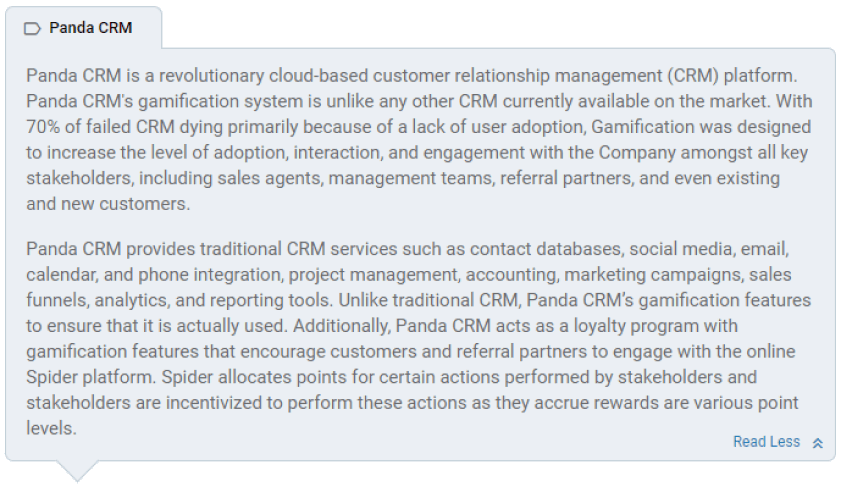
Remember, your readers might not read the whole business plan, but they will definitely go through the executive summary. So, make sure to keep it simple and engaging.
Say goodbye to boring templates
Build your business plan faster and easier with AI
Plans starting from $7/month

2. Company Overview
In the company overview section, introduce your business in detail. It includes legal structure, name, location, business history, and everything about your Saas company.
First, provide the basic details of your Saas business – what is the name and what type of Saas business do you own; for example, your Saas business might be:
- Horizontal Saas: This Saas business model allows Saas businesses to cater services to various customer segments.
- Vertical Saas: Here the solutions are created for a particular customer segment of the industry.
- Collaboration Saas: This type of Saas business allows teams to work together. They also enable document sharing, project management, communication, and more such functions.
After that, mention the owners of your Saas startup along with the qualifications. Add the mission statement of your business and do not forget to include business history (if any) & future goals.
This section should provide an in-depth understanding of your business and business owners.
3. Industry Analysis
In the industry analysis section of your SaaS business plan, it is essential to provide a comprehensive overview of the SaaS industry. While this may seem unnecessary, it gives you a deep understanding of your industry which will help you in business planning.
Here are certain questions that will help you in the analysis:
- What is the current size of the Saas industry in terms of revenue?
- What are the current trends of the Saas business?
- Who are the leading SaaS businesses in the industry?
- What is the growth forecast for the industry?
For example, look at this industry and the size of the Saas industry with the help of Upmetrics:
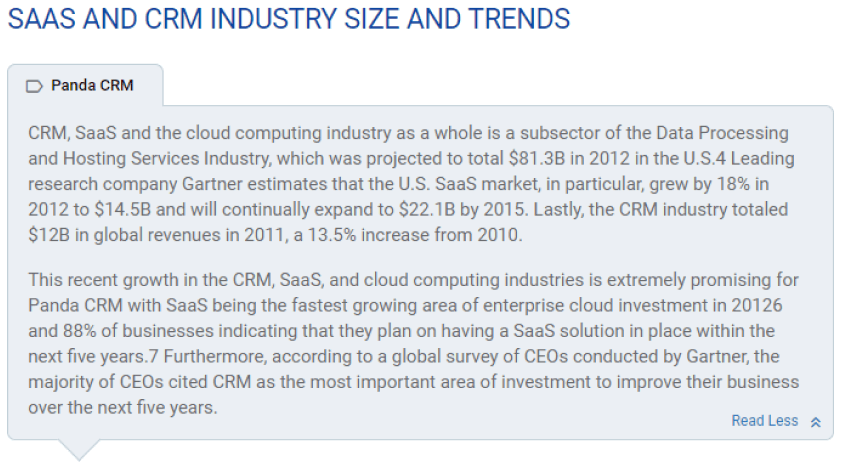
Conduction this industry analysis will educate you about the market and help you prepare marketing strategies according to the market trends.
In short, your industry analysis will provide a clear and comprehensive view of the SaaS market, helping you make informed decisions and easily communicate your business’s positioning and potential.
4. Competitive Analysis
Competitive analysis will help you understand your business better and identify the strong points of your product.
Start by specifying who are your competitors – both companies like yours (direct competitors) and other choices customers might consider (indirect competitors).
Now, let’s focus on your direct competitors, those similar to your SaaS service. Provide an overview of each competitor, including their size and where they’re based.
Next, look at their strengths and weaknesses. Find out:
- Which customer segment do they serve?
- What kind of software services do they offer?
- How do they price their services?
- What are their strengths and strong points?
- What do they need to work on, according to their customers?
- What is their customer acquisition cost?
A better way to conduct this analysis is by seeing things from a customer’s viewpoint. You might even ask your competitors’ customers what they like and dislike about them to better get insights about them.
This way you can get to know the unique selling proposition of your SaaS company. Think about all the areas where you will outperform your competition and make sure to include that in your strategies.
Your USP might be:
- Ease of use
- Customization
- Attractive pricing structure
- Free Demo
- 24*7 customer support
In short, through this analysis get to know about your USPs and competitors.
5. Market Analysis
In this section, dive into the market where you will provide SaaS services.
Start your market analysis section by providing the details of your target customers. Your target market can be:
- Small to medium-sized businesses
- E-commerce retailers
- Startups
- Enterprise level companies
- Nonprofits or NGOs
After mentioning your target market, give a detailed overview of the market size and growth potential of the industry. For example: here is the market size of wages and salary sales workers for a customer relationship management solutions provider software SaaS company:
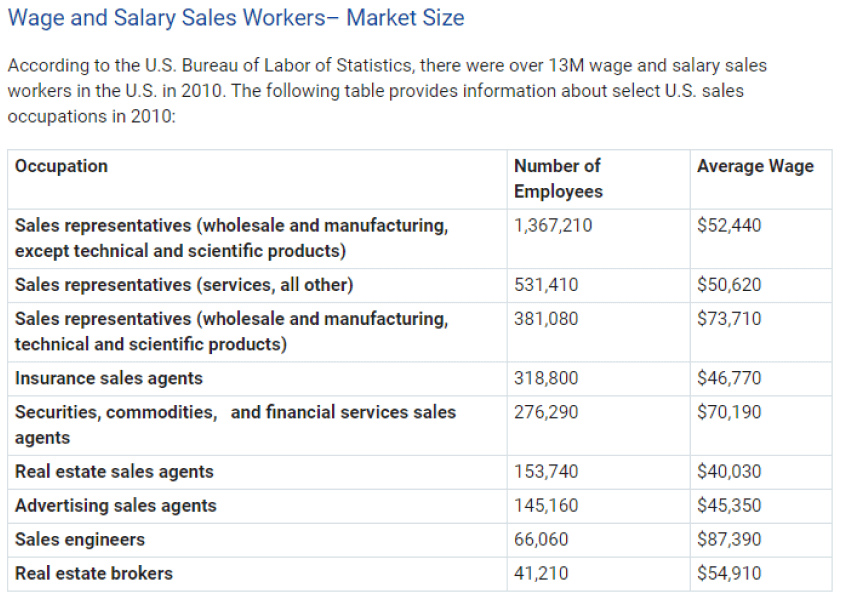
Now focus on market trends too. Mention what your target customers prefer and what new are they looking for. For example, people might be looking for:
- Remote work solutions
- AI and machine learning integration
- Hybrid cloud solutions
At the end of the market analysis, do mention the regulatory environment your SaaS business needs to follow.
6. Product Offerings
After mentioning your target customers, give details of products that are supposed to make life easier for the target customers. So, make sure your products are easy to use and efficient.
Your product might provide one of these:
- Customer Relationship Management (CRM)
- Project Management (PM)
- Enterprise Resource Planning (ERP)
- Sales Funnel Management
- Financial Management
- Human Resources Management (HRM)
- Communication Solutions
- Automated Marketing Solutions
7. Sales and Marketing Plan
Writing the sales and marketing section means jotting down all the customer acquisition strategies and the tactics for how to retain them.
First, you need to identify and understand your target market, then need to know your USPs because these two elements will be at the base of all your strategies.
Now it is time to mention your customer acquisition strategy as in whether you will go for inbound acquisition or outbound acquisition.
Inbound acquisition
Inbound strategies are fully digital and are necessary to fully convert potential customers into existing ones.
They include acquiring customers or retaining existing customers with the help of content marketing, search engine optimization (SEO), social media marketing, email marketing, etc.
Outbound acquisition
Outbound strategies are all about going to the potential customers directly rather than waiting for them to come to you. This can only happen with a proper sales team by your side.
These strategies include cold emails, cold calls, LinkedIn outreach, direct mail, trade shows, etc.
Once you have noted down how you will acquire customers, then mention below things too:
- Customer acquisition cost
- How many customers do your salespeople close per month on average
- Your monthly paid advertisement budget
- Number of followers you have on social media
8. Management Team
Knowing who is behind your SaaS business will increase the appeal of your business plan.
The management team tells you about the people in charge of the SaaS business. It should explain each manager’s experience, what they’re good at, and what their jobs are.
Here is an example with the help of Upmetrics of how to mention your key managers:
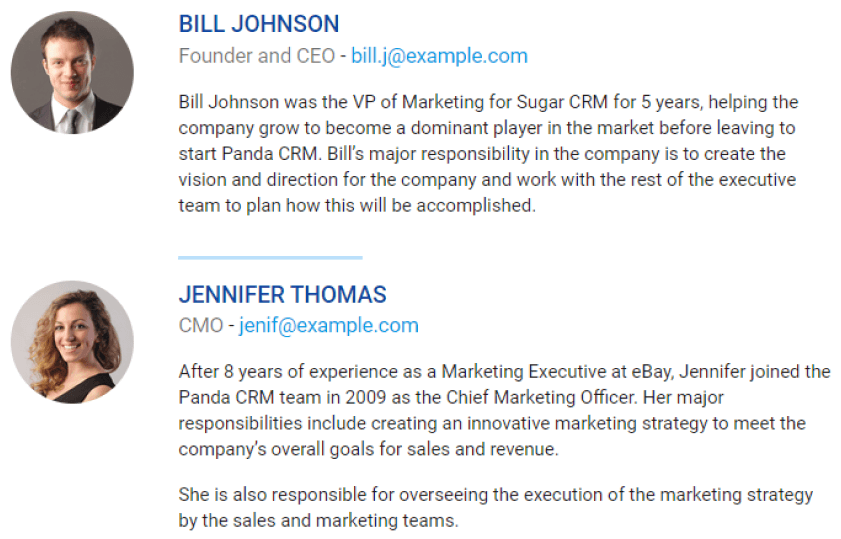
Whether you are going for a traditional business plan or a modern lean plan, do not ignore mentioning your management team.
9. Operations Plan
This part is like a map that shows how you will make your SaaS business work. It’s divided into two sections:
Everyday Work:
This is what you do every day to keep the business running. Like getting customers, helping them out, and dealing with paperwork. You have to explain how you’ll do all these daily tasks efficiently.
For example here is the purchasing procedure for CRM software with the help of Upmetrics:

Big Goals:
These are the important things you want to achieve in the future. It could be reaching a certain number of customers, making a lot of sales, hiring more team members, or launching new features.
Here, you have to show your plan for reaching these goals, including when you aim to get there and what you’ll do to make it happen.
This operations plan is like a guide for handling your everyday tasks and making big dreams for the SaaS business come true.
10. Financial Plan
Your financial plan needs to have a 5-year financial forecast. For the first year, break it down into monthly or quarterly details, and then summarize it annually. This forecast should cover your income statement, balance sheet, and cash flow.
Income statement
An income statement, often known as a Profit and Loss statement or P&L, displays your earnings and then deducts your expenses to know the profitability of your business.
When crafting your income statement for SaaS sales growth, you have to make some assumptions. Here is an example of an income statement with the help of Upmetrics:
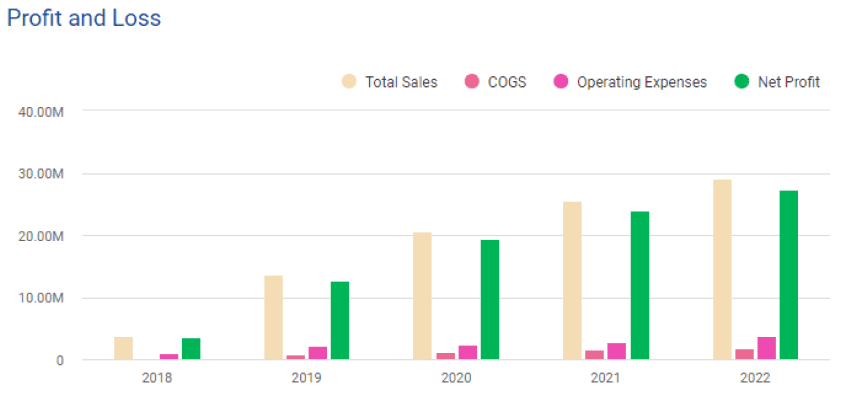
Balance sheet
Balance sheets display your assets and liabilities. Although they can contain a lot of details, like equity, goodwill, other intangible assets, etc.
Cash flow statement
Your cash flow statement helps you see how much money you need to start or grow your business and avoid running out of money.
Surprisingly, you can make a profit but still face financial problems that could lead to bankruptcy. Therefore, you will need proper cash flow planning to avoid such circumstances.
SaaS Industry Highlights 2023
- Growth forecast: The Software as a Service (SaaS) market was to hit $141.40 billion in revenue by 2023 and is expected to maintain a yearly growth rate (CAGR) of 5.64%, reaching a market size of $186.00 billion by 2028.
- USA’s growth: When compared on a global scale, the United States is expected to generate the highest revenue, reaching $141,400 million in 2023.
- User spending: Spending by end-users on SaaS was to reach $208.08 billion in 2023, making up 35% of all spending on end-user public cloud services.
- Leveraging AI: Around 40% of businesses were prepared to integrate AI technology into their operations in 2021, and the forecasted expansion of cloud AI in 2023 is expected to be five times greater than it was in 2019.
Download a SaaS business plan template
Ready to kick-start your business plan writing process? And not sure where to start? Here you go, download our free SaaS business plan pdf, and start writing.
This intuitive, modern, and investment-ready template is designed specifically for SaaS businesses. It includes step-by-step instructions & examples to help in creating your own SaaS business plan.
The Quickest Way to turn a Business Idea into a Business Plan
Fill-in-the-blanks and automatic financials make it easy.
Write your business plan with Upmetrics
With Upmetrics, you get easy-to-follow steps, templates you can adjust, over 400+ examples of business plans, and AI support to make your business planning simpler.
If you’re not great with financial formulas, Upmetrics helps you make accurate money forecasts for 3 years or more.
Whether you’re beginning a new business or trying to expand an existing one, Upmetrics is all you need to create a successful and pro-business plan that matches your goals.





